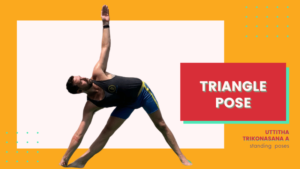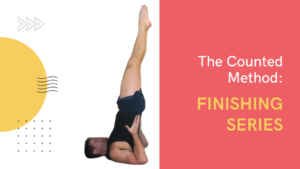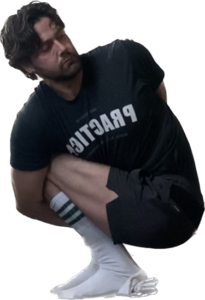Primary Primer
Led Primary Series is a dynamic and powerful type of vinyasa yoga practice. While this class is not appropriate for total beginners (we recommend the Mysore class for that), it can be amazing for folks sooner than they may think. This is our little love letter to those wondering if Led Primary is for them.
For those that aren’t familiar with Ashtanga, but have a strong background in the movement arts, you’ll likely be fine (if occasionally confused). Ashtanga’s a lot of fun. Its a set sequence of postures that are linked together through breath and movement. It begins with Surya Namaskara A and B, followed by standing postures, a seated sequence, and a closing sequence.
This class is designed to develop strength and flexibility, improve balance and coordination, and increase focus and concentration. It can also be intimidating. Don’t freak out.
What can you expect, the 1000 ft view:
- 10 minutes of guided breathing/meditation
- 10-15 Minutes of Sun Salutations, generally 5 of the A and 3 of the B.
- 10-15 Minutes of Foundational and Standing Postures
- 30 Minutes of Seated Postures
- 15 Minutes of Closing Sequence
- 5 Minutes of Deep Rest
What will you learn explicitly in almost every Led Primary?
- The looking place for each posture.
- The breathing pattern for each posture.
- The Sanskrit count applied to the count.
- The opening chant.
Why come to class?
- To learn the Count.
- To be in Community.
- To practice Accountability.
- To build Heat.
The Mechanics
Ashtanga Yoga is a Kriya Yoga. It’s meant to bring us concentrated focus that brings on insight. It’s very much a meditation. Led Primary is meant to be a moving meditation. To me, it feels like being incredibly absorbed in a task, while simultaneously not giving a fuck and caring a great deal– yes, all at the same time. In the great words of the Ashtangi Madonna, “How do you describe a feeling?”
I know for sure that for most folks, led primary is challenging at first.
For a LOT of people, to practice breathing at a rhythmic cadence with a specificity of movement can be quite confronting in its difficulty. This confrontation can feel like friction. It’s from precisely this friction point that the process of Kriya Yoga begins to work.
In the yoga sutras, Kriya Yoga is defined as being a dynamic process of building heat, studying one’s own behavior, and surrendering to what is real. Some people really lean in to this idea of a personal god, but others view it as Brahman (Absolute Reality). Some refer to a surrendering to the reality of a Supreme Consciousness or, ya know, a personal god. For my money, it’s all the same.
But, back to friction: Once friction has entered the picture, the next step is to notice the friction. Friction can come in all kinda forms. Some of us feel angry. Some of us feel dejected. Some of us want to quit. Some of us praise ourselves for being so much better at yoga than others. All of these are friction-y, and none of them are particularly great at indicating whether a practice has been “good” or “bad”.
In fact, the real trick is to recycle the response. These vibes are simply hailing frequencies, calling out for your attention. They’re mental hooks that can inspire a noticing. And once you notice them, you’re in an empowered position, because you can maybe learn something about your reactions.
But get this: you don’t need to try to learn anything about your reactions while you’re practicing. That will happen naturally if you can just let things be as they are — surrender to what’s going on inside of yourself, and get back to the business of enjoying practice.
How do I know I’m ready for led primary?
- You’re comfortable making an effort learning the breathing system.
- You know your MVPs — most viable positions, even if you can’t always remember how to get in or out of them, or what order they come in.
- You’re not a totally aggressive nut job on the mat who is trying to turn this into some kind of weird competition with their neighbors, the teachers, or themselves.
- You’re willing to notice if you are being #3 (or some evolute) and hadn’t realized previously, and will try to knock it off.
The big idea is that every posture in a led primary series can be performed in an accessible way— executable with a stress stimuli that doesn’t become a freak-out. And that’s what we want— for you to make it through primary, freak out free. Also, it’s not the teacher’s job to tell you you’re being a nut job (and nor should they)– you’re supposed to notice on your own.
Three Ways to Be:
Here are three qualities that you can bring to a led primary that can help make it a really enjoyable experience, whether its day 1 or day 1000:
Friendly:
Because people come to practice for community, it makes things go a lot better if the community doesn’t suck. This starts with how you treat yourself: try to be supportive! Think about all the nice things you would say to someone else who was working to do a good job– remember to say those nice things to yourself. And, while you’re at it, don’t be afraid to make a little eye contact and communicate gently with your neighbors when need be. Make an effort to radiate loving kindness, and I know you’ll get it back in spades.
Focused:
We really are trying to teach the count, and we really are trying to have longer and longer moments of meditation sponaniously arise. That can only happen through sustained focus. This means making a real effort to work with the breathing, the looking place, and the shapes. Stay focused, and try not to be distracting to others. But also remember: this is how almost everyone learned. And Friendliness is way more important than focus for almost everyone. They say that the yogis of the heart get to enlightenment the fastest, anyway. Sometimes, even pretending to be focuses has a way of helping us learn how to be more focused.
Frugal:
Don’t feel like you have to do every posture to an extreme. A good posture is steady and comfortable. Don’t let perfect get in the way of good, as it were. Make room for each other– the more space each of us take up, the less others have— so no need to take your widest straddles or longest stances. That’s not to say that if you’re tall you need to shrink— perish the thought. What I’m saying is, be cognizant of how your work impacts the work of others— remember that we’re all just vibing together.
Practice Axioms:
- Everyone at led primary is on the same team, and everyone is cheering for you.
- Someone’s always gonna be first, someone’s always gonna be last. No one’s keeping score— and even if they are, that’s not the way this game is played, anyway.
- You can always just breathe with the group– you don’t need to do every vinyasa or every posture.
- Your best is your best– and its dynamic from moment to moment. Do your best.
- You are welcome to sit down, lie down, or take rest at any given time. Everything is optional.
- A spectacle is quite different from being spectacular— you are welcome to be spectacular.
- You can only practice with the body you have today.
Practical Stuff:
Do I need to know the count?
Nope, you’ll learn it. Try your best to match what the teacher cues.
Do I need to do everything?
You can skip vinyasas between sides. You can skip vinyasas between postures.
I’ve only learned as far as [x] pose in Mysore. What do I do?
Study up on the sequence, and see if you can think of some alternatives. Otherwise, You can skip them and stick around until closing.
I have to leave early, is that okay?
Absolutely. Your time is valuable and we’re always glad you got some practice in. Feel free to take closing in the back (or as directed by the instructor), leaving an appropriate time for rest.








[…] Primary Primer— Some encouragement to get you guys in on Fridays. It’s the best! […]
[…] Primary Primer— Some encouragement to get you guys in on Fridays. It’s the best! […]
[…] Primary Primer— Some encouragement to get you guys in on Fridays. It’s the best! […]